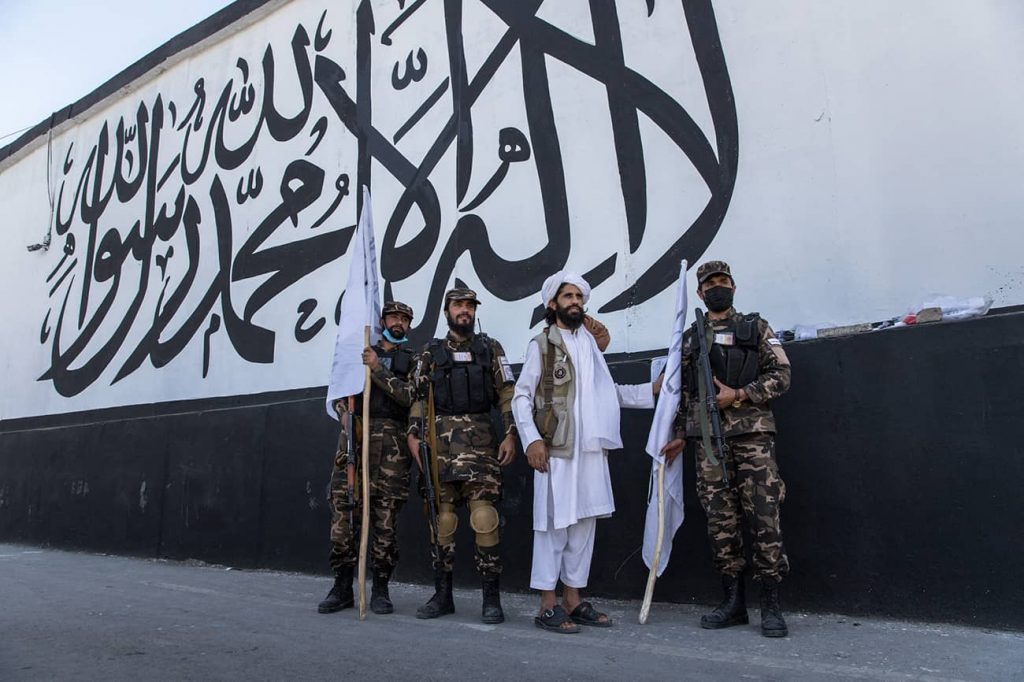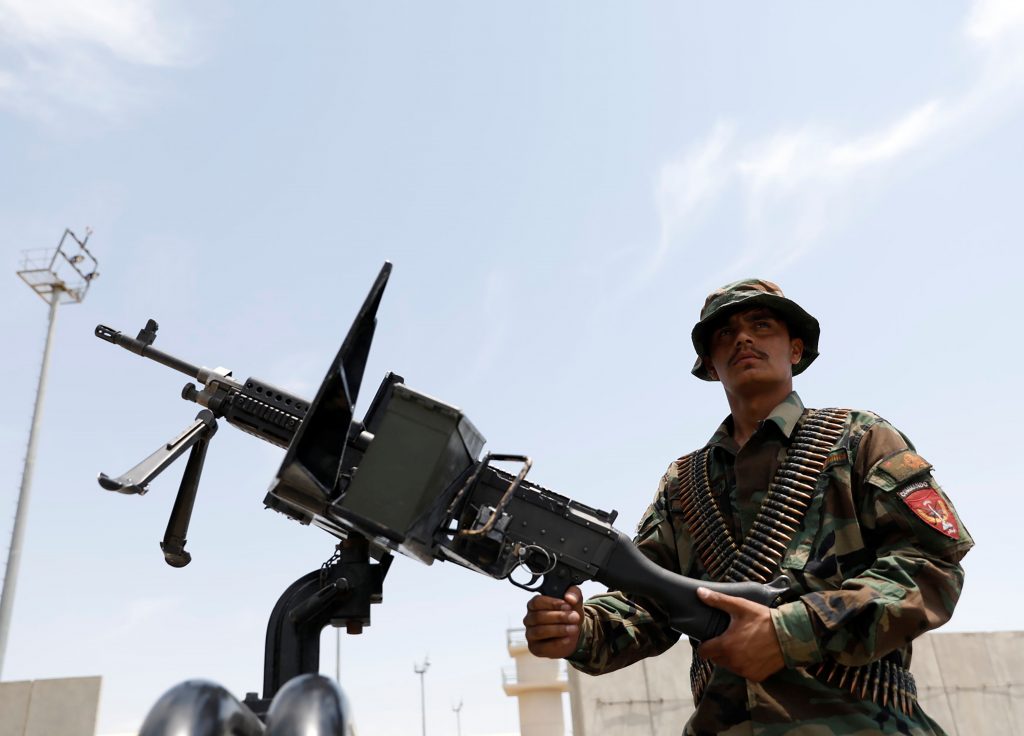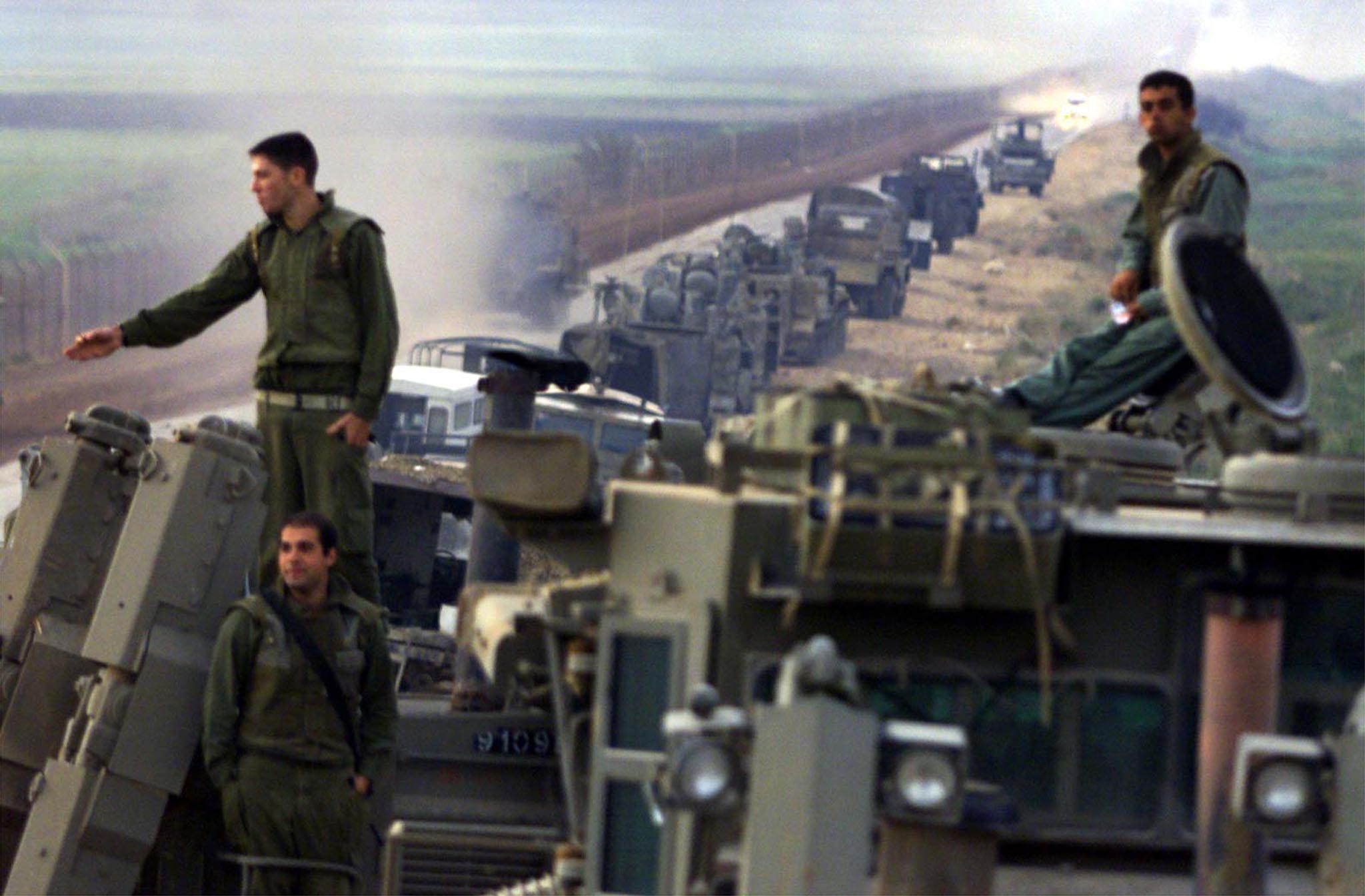US forces completed their withdrawal from Afghanistan just 11 days before the 20th anniversary of 9/11, ending the longest war in US history. The analogy, at least for the American public, is the US withdrawal from Vietnam in 1975. But for many Israelis, the recent images from Kabul revive memories of the Israeli experience in Southern Lebanon between 1982–2000. Only about six months ago, the Israeli government approved a service stripe for those who had served in the IDF at the time, finally recognizing the Israeli presence in the security zone as a war—by far the longest war in which Israel has ever been engaged. In this column I will review five similarities between the Israeli experience in Southern Lebanon and that of the US in Afghanistan. Keeping in mind the obvious differences between the two cases, there is still a broad basis for comparison from which meanings can be deduced, regarding future wars and specifically American interventions in the coming decades.
>> Military Matters: Read more from Pnina Shuker
Turning “Wars of Choice” Into “Just Wars”
Launched in June 1982, Operation Peace for Galilee, which led to the Israeli presence in Southern Lebanon, was, in fact, the first war of choice that Israel had initiated (the circumstances of the Sinai campaign in 1956 are more complex in nature and place it in the category of a preventive war). The Israeli prime minister at the time, Menachem Begin, realized this problematic framing of the war and its impact on public opinion and therefore tried to legitimize it by presenting it on numerous occasions as a legitimate “war of choice.” Generally, Begin’s rise to power had changed the Israeli security perception, as well as the attitude toward the question “Why are we fighting?” Israel’s previous security perception was that Israel had to go to war when it felt threatened or insecure about its ability to defeat its rivals. However, Begin developed an offensive approach, according to which Israel goes to war when its military power is at a high point, which could effectively be used to change regional conditions.
Accordingly—and contrary to the common belief that he was misled by the defense minister at the time, Ariel Sharon, into a far-reaching adventure—Begin had a significant responsibility for expanding Operation Peace for Galilee far beyond the 40 kilometers approved by the cabinet. In fact, from the moment Begin came to power in 1977, Israel began a countdown for an extensive and comprehensive operation in Lebanon, with the actions, decisions, and declarations of Begin and his government in the years before the war paving the way. Operation Litani, which was carried out in March 1978, in response to a particularly grievous Palestinian terror attack, was the first indication of Begin’s intentions. The assassination attempt of Israel’s ambassador in Britain, Shlomo Argov, (by a rogue group not subject to PLO authority) merely served as a trigger for a preplanned intervention, launched two days later and eventually extending Israel’s stay on Lebanese soil to 18 years.
Similarly, without questioning the deep shock that the terror attacks of 9/11 inflicted on every American citizen and the subsequent public pressure to act against terror strongholds, the Bush administration had aspired to operate in the Middle East long before the terror attacks took place. As early as 1998, neoconservatives thinkers had put forward their vision for a new American foreign policy in the Middle East and warned publicly that the threat posed by Saddam Hussein required decisive action or else, as one of them titled his book, America would become “Tyranny’s Ally.” Upon George W. Bush’s entry into the White House, a forceful group of high-level officials, including Cheney, Rumsfeld, and Wolfowitz, brought these perspectives into focus, with Powell and Armitage taking a more realist view and Rice walking a complex middle path. Collectively known as the “Vulcans,” those appointed to key positions in the Bush administration had a profound influence on the president’s stances toward foreign policy issues; in the aftermath of the 9/11 attacks, the balance tilted irrevocably toward an interventionist and wide-ranging project of transformation. Bush decided to focus on al-Qaida first, largely due to public expectations and came to believe that if the mission in Afghanistan would be perceived as successful, it would make it easier to mobilize public support for military operations in other arenas, including Iraq. And indeed, less than two months afterwards, Bush ordered the Department of Defense to commence extensive planning to overthrow Saddam Hussein, although no new evidence has emerged linking Saddam to the 9/11 terrorist attacks. Nowadays, it is widely agreed that the threat assessments, which the Bush administration used for justifying the war against Iraq, were excessive and, to some extent, based on faulty intelligence. In much the same way as Israel extended a war against a terrorist enemy, the PLO, into an attempt to reshape Lebanese politics and identity, the US extended the logic of a justified war against al-Qaida into launching an effort to transform the entire region—beginning with Iraq—under the banner of destroying tyranny. In retrospect, questions persist as to the legitimacy of this undertaking, which cost the US taxpayers over two trillion dollars and claimed the lives of 4,497 Americans.
Controversial Wars
Wars of choice are controversial by nature. For the first time in Israel’s history, domestic protests against Operation Peace for Galilee broke out before the fighting had subsided. The scope of the public protest was illustrated by a demonstration of 400,000 people in September 1982 (the actual number may have been lower), following the massacre perpetrated by Israel’s local allies in the Sabra and Shatila camps. Also, a few protest movements were established, such as “Parents Against Silence,” which sought to express the pointlessness in continuing the war and to protest the rising death toll among the IDF soldiers. Other movements, such as “Yesh Gvul,” encouraged IDF soldiers to refuse to serve in the Lebanese front. To a large extent, the Israeli withdrawal to the “security zone” in 1985 manifested a growing recognition of the centrality of social and political constraints and their impact on the IDF’s military strategy, as well as the futility of the broader plan of intervention following Bashir Gemayel’s assassination by Syrian agents. After the IDF’s withdrawal to the security zone, as long as the number of casualties among IDF soldiers was tolerable, Israel’s presence in Southern Lebanon—and the conflict with Hezbollah—gained support among the Israeli public. Therefore, between 1985–1995 there was no real pressure to withdraw from the security zone. However, from 1995 onward, the average death toll began to rise and reached its peak during 1997. The mounting casualties led to the establishment of the “Four Mothers” organization, which increased the public pressure for a unilateral withdrawal.
In a similar fashion, Operation Enduring Freedom in Afghanistan received overwhelming bipartisan support from both national leaders and the American public for as long as it seemed to achieve a purpose. In 2002 the popularity of the war reached its peak, given the military successes of the coalition forces against the Taliban. However, the beginning of the nation building phase marked the start of the declining public support for the war.
As a matter of fact, until 2009, most of the American public’s attention was focused on the war in Iraq, in which greater resources were invested. As the gradual US withdrawal from Iraq progressed, the American public once again turned its focus to Afghanistan. Following the two deadliest months for US troops, opposition to the war in Afghanistan grew steadily, with most of the American public opposing it by August 2009. Following the killing of Osama bin Laden in May 2011, most Americans (64%) believed that the war was no longer worth fighting. Ten year later, 70% supported President Biden’s decision to withdraw all US troops from Afghanistan.
Sinking in the Swamps
Von Clausewitz claimed that there is no logic in extending wars beyond the minimum that is required, but both the US and Israel didn’t get the memo. In the Israeli case, the stay in the security zone was intended to protect the towns and villages in Northern Israel against terrorist attacks from Southern Lebanon, so it can be perceived, at least during its first years, as serving a vital interest. But during the mid-1990s, the IDF activity in the security zone became mainly defensive, and soldiers were killed while passively manning fortified outposts. Ironically, the unofficial mission of the forces was to protect themselves and avoid being killed. This, together with the mounting casualties during operational accidents, led to a public sense of sinking in the “Lebanese swamp” and intensified the pressure—supported by senior IDF officials—to withdraw from Lebanon.
As for the American case, by the end of November 2001, the Taliban had been defeated and driven from power. The US could have withdrawn its forces from Afghanistan immediately afterwards and let local forces take charge. Doing so would have enabled the US to avoid any nation-building effort that ultimately meant its sinking again into a bloody Vietnam-style swamp, for the sake of a purpose whose viability was questionable. Another possible successful exit point from the war was May 2, 2011, after the killing of Bin Laden; that opportunity, however, was also set aside in hopes of stabilizing Afghanistan.
The Building and Collapse of Local Armies
Following its 1985 partial withdrawal from Lebanon, Israel established the South Lebanon Army (SLA) in the security zone. An allied militia of 2,500 members, it was composed of local Lebanese, mainly former members of the “Free Lebanon” forces, largely from Shiite communities who had been long abused by the Palestinians during their years of control in the south. Israel was responsible for equipping the SLA, which bore a large share of the fighting against Hezbollah and, to a lesser extent, against Amal. At the same time, Israel was pouring in aid for the development of Southern Lebanon, and Lebanese—mostly relatives of the SLA members—crossed the border daily into Israel for work.
In 1999, given the growing public pressure, the newly elected Israeli prime minister, Ehud Barak, announced that the IDF would retreat from the security zone within a year. Upon learning of the impending withdrawal planned for July 2000, Hezbollah organized civilian processions toward SLA outposts as early as May 2000. The SLA members began to abandon their positions, escaping with their families to Israel in order to obtain asylum. Soon the entire organization collapsed, without a single shot being fired. During the years to follow, many criticisms were heard, both among SLA members and in the IDF, according to which Israel provided shelter only to senior commanders of the SLA, although, as a matter of fact, a few thousand members and their families had settled in Israel.

Taliban fighters In front of the former US Embassy in Kabul. Photo credit: Zerah Oriane/ABACA via Reuters Connect

An Afghan security forces member keeps watch in Bagram air base, after American troops vacated it. Photo credit: REUTERS/Mohammad Ismail
As for the Afghan parallel, after ending the main combat operations, the coalition forces started focusing on the nation-building mission. According to the new counterinsurgency approach, the various administrations had invested 131.3 billion dollars in reconstruction activities in Afghanistan, in order to win the hearts and minds of the local population. Additionally, the US had invested 80 billion dollars in building and equipping the Afghan National Defense and Security Forces (ANDSF).
Despite the massive investment, the fact that the corrupt and polarized Afghan government, as well as the poorly motivated Afghan forces, constituted a broken barrel was well known to different administrations; the flow of aid continued, however. President Bush, as well as President Obama, expressed their disappointment with the ANDSF’s ability to deal effectively with the remaining terrorist strongholds. The Afghan government proved incapable of extending its control over large parts of the country, enabling the Taliban to regroup and begin a guerilla insurgency that grew increasingly effective. Moreover, it was clear that the Afghan government alone would not be able to bear the costs of making the ANDSF strong enough to resist the heavily armed Taliban. As early as October 2020, when it was officially announced that the US would withdraw from Afghanistan, many Afghans, especially those who served as interpreters and liaisons in the Afghan and American armies, sought to find any way of leaving the country. Many of those who cooperated with the US military worked for months to obtain asylum in the US, but the Biden administration was slow to recognize the urgent need to help them, hence the chaotic (and ultimately heroic) scenes at Kabul Airport in August 2021.
Hasty Withdrawals and its Consequences
In light of the quick collapse of the SLA, Prime Minister Barak decided to advance the withdrawal in order to minimize the risk for the IDF troops. With a 24-hour notice, the withdrawal took place on the night of May 24, 2000 and was carried out in total chaos. Although many sided with it in principle, the way the withdrawal was accomplished left a bitter taste among the Israeli public. Although the IDF conducted controlled explosions of some of its outposts, some of them remained unharmed and during the hasty retreat, heavy weaponry, as well as secret documents, were left behind. Hezbollah and other organizations that moved into the former security zone captured the abandoned arsenal, which included D-9s bulldozers, trucks, communication equipment, some mortars, tons of ammunition, fuel and other items. as well as all SLA weapons and tanks.
One can claim that the Palestinians had interpreted the Israeli withdrawal as a surrender to stubborn military pressure, and therefore had inspired the Second Intifada (in essence, a campaign of terror directed from above), which broke out only four months later. Many Palestinian leaders, such as Yasser Arafat, as well as Hamas leaders, such as Ahmad Yasin, claimed that the IDF withdrawal from South Lebanon “proved” that the Israelis understood only the language of force.
A similar sequence occurred with the dramatic nighttime abandonment of the US air base at Bagram on July 5, 2021. It set in motion a collapse not unlike that of the SLA in 2000. Contrary to American intelligence estimates, the Taliban rapidly took over the cities from which American forces withdrew. After the fall of Kabul on August 15, President Biden decided to complete the withdrawal by August 31, almost two weeks earlier than planned. The images of thousands of Afghans, including women and children, flocking to the Karzai International Airport and hanging desperately onto Western aircraft, as well as of US military equipment captured by the Taliban, have shocked the international community and deepened the sense of purposelessness as the ultimate outcome of the 22-year long American stay in the country.
Although the US forces destroyed dozens of vehicles and aircraft during the withdrawal, the Taliban still seized valuable military equipment, such as Black Hawk helicopters, drones, and light aircraft. Additionally, the Afghan Security Forces abandoned their weapons, and many soldiers were captured by the Taliban. It already appears that the rapid takeover of Afghanistan by the Taliban is strengthening the motivation of Islamic jihadist organizations, such as the Islamic State (Da’esh), to boost their activities, as exemplified by the attack on the Karzai Airport in the midst of the retreat.
Conclusion
The US, as well as Israel, paid a heavy price in blood, treasure, and perceived deterrence during their stays on foreign soil. Despite the obvious differences in their goals and in the character of the conflicts described above, the similarities stand out and demand close attention, in order to avoid repeating the same mistakes. The unachievable aims, the reluctance to withdraw, the postponement of the decision even in the face of the loss of purpose, and ultimately the disorderly manner in which these withdrawals were finally carried out left their rivals stronger, both militarily and morally. It can be assumed that at least in the coming decades, the Afghanistan Syndrome will shape American foreign policy, similar to the way that the Lebanon Syndrome has shaped Israeli foreign policy during the aftermath of the withdrawal, generating a reluctance to take and hold enemy areas, which was felt keenly during the Second Lebanon War in 2006, and coloring the planning and policy choices in Gaza even today.



